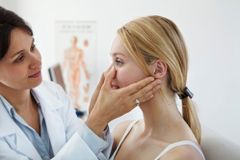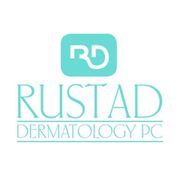What’s the Difference Between Atopic & Contact Dermatitis?

Dermatitis is a frustrating group of skin rashes that can create constant discomfort. Itchiness, inflammation, scaling, and cracking are a few symptoms, and they’re related to the two most common types of rashes: atopic and contact. Although the difference isn’t always apparent, recognizing them will ensure you see a dermatologist and receive the care you need.
Atopic
 Atopic dermatitis appears in flexural locations on the skin, such as the ear or inside of your elbow or knee. It’s often due to a genetic mutation where the protein filaggrin breaks down and dehydrates the skin. This results in rashes, itching sensations, and also allows dust mites and allergens to penetrate the skin.
Atopic dermatitis appears in flexural locations on the skin, such as the ear or inside of your elbow or knee. It’s often due to a genetic mutation where the protein filaggrin breaks down and dehydrates the skin. This results in rashes, itching sensations, and also allows dust mites and allergens to penetrate the skin.
This condition typically manifests in children ages 5 and under. Symptoms include red, dry patches of skin, thickened skin, and bleeding. Atopic dermatitis is a chronic skin condition with no cure and has to be managed with careful environmental adjustments. People with this condition should avoid hot baths or showers, extreme temperatures, and strong soaps. They should also use a dermatologist-approved moisturizer every day to keep skin hydrated.
Contact
Contact dermatitis is a delayed skin reaction following contact with an allergen or irritant, such as chemicals and poison ivy. Others include cosmetics, detergents, waxes, rubber, dyes, and metals. Symptoms may manifest as red skin, eye and facial swelling, and blisters. This condition only occurs on the site that contacted the allergen. These rashes will often linger and can usually be treated with cortisone creams, antihistamines, or prescription lotions from a dermatologist.
If you’re living with dermatitis, contact the team at Rustad Dermatology PC, in Lincoln, NE. Dr. Rustad has over 40 years of industry and is certified with the American Board of Dermatology. He and his team treat a variety of skin conditions, including rashes, dermatitis, and melanoma. Learn more about their services online, or call (402) 484-6222 to schedule an exam.
About the Business
Have a question? Ask the experts!
Send your question

